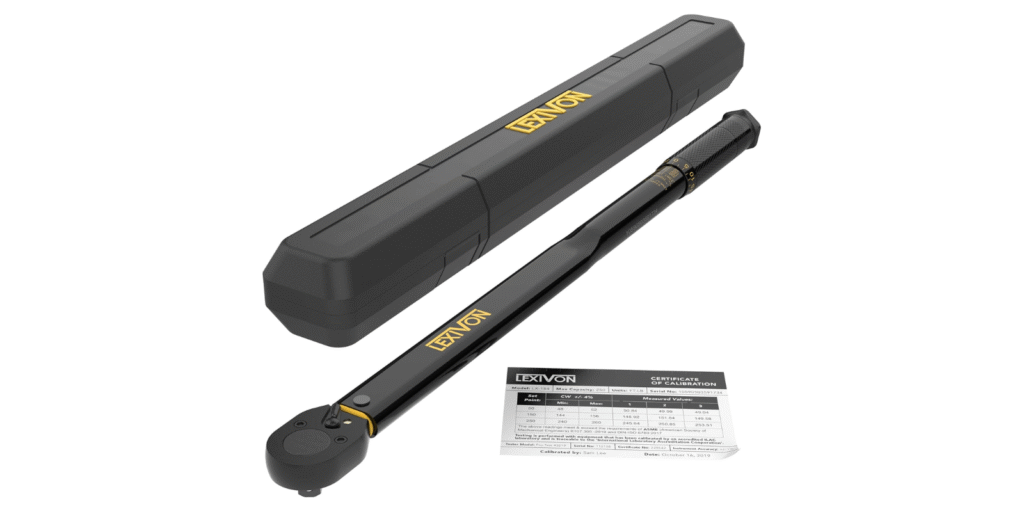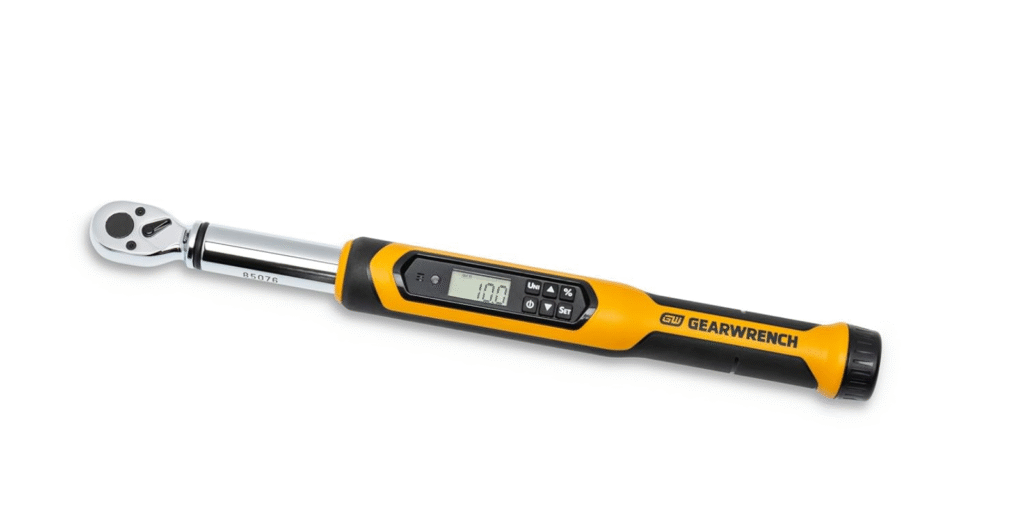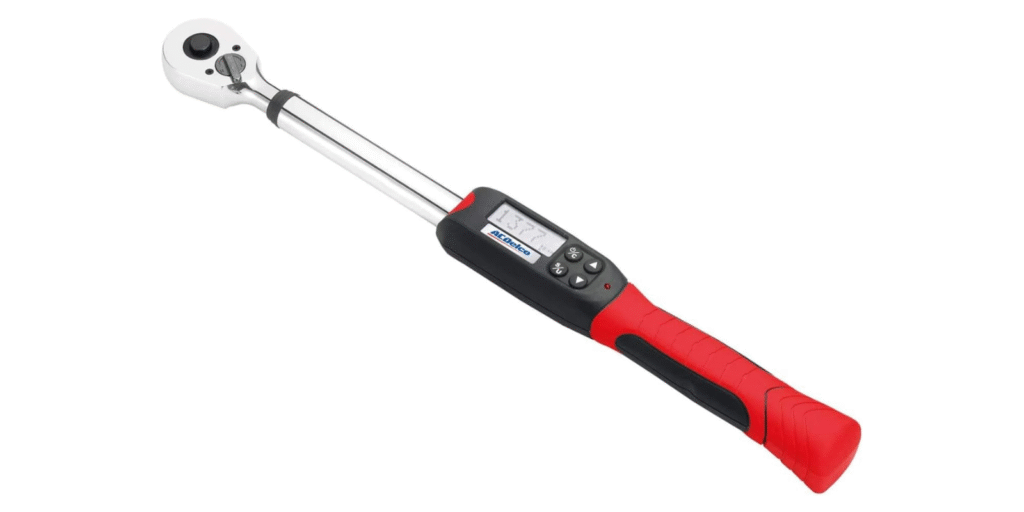Table of Contents
Toggle1. Introduction
The Best Torque Wrench for DIY Car Repairs in 2025 isn’t just another tool — it’s your insurance against over-tightening, stripped threads, and failed repairs.
Every DIY car enthusiast knows the satisfaction of fixing things on their own—but did you know that improperly tightened bolts can ruin your repair?
A reliable torque wrench isn’t just a fancy tool; it’s a must-have for modern car maintenance. As manufacturers tighten torque specs for safety and performance, using the right torque wrench is crucial.
In this guide, we’ll cover the best torque wrenches for 2025, break down their features, and help you choose the right one for your DIY car projects.
2. Why You Need a Torque Wrench for DIY Car Repairs
Precision torque is vital when you’re working on engines, wheels, or suspension components. Over-tightening can damage threads or crack components, while under-tightening may lead to failure of critical parts. A torque wrench ensures you apply the correct force every time—saving you money on garage visits and ensuring your repairs are safe and professional-grade.
3. Types of Torque Wrenches Explained
Four main types of torque wrenches are widely used in car maintenance and repair tasks.
- Beam Torque Wrenches: Simple and inexpensive but less accurate.
- Click Torque Wrenches: Most popular; they “click” when torque is reached.
- Digital (Electronic) Torque Wrenches: Offer precise readings with digital screens.
- Dial Torque Wrenches: Highly accurate but bulkier and more expensive.
Choose based on your budget, precision needs, and comfort level.
4. Top 5 Torque Wrenches for DIY Car Repairs in 2025
LEXIVON 1/2-Inch Drive Click Torque Wrench
Key Features: Pre-calibrated ±4% accuracy, durable construction, clear scale.
Price Range: $45–$55
Why it’s good for DIY: Great balance of price and reliability for beginners.
Pros: Easy to use, sturdy build.
Cons: No storage case included.
GearWrench Electronic Torque Wrench
Key Features: Digital display, memory function, ±2% accuracy.
Price Range: $120–$150
Why it’s good for DIY: Ideal for tech-savvy DIYers seeking precision.
Pros: Accurate, backlit screen.
Cons: More expensive, battery required.
TEKTON 3/8-Inch Drive Click Torque Wrench
Key Features: Simple, reliable, dual-range scale.
Price Range: $35–$45
Why it’s good for DIY: Perfect for medium-duty repairs.
Pros: Compact, affordable.
Cons: Slightly harder to read scale.
EPAuto 1/2-Inch Drive Click Torque Wrench
Key Features: Chrome vanadium steel, ±4% accuracy.
Price Range: $25–$35
Why it’s good for DIY: Budget-friendly and accurate enough for home users.
Pros: Cheap, comes with a case.
Cons: Heavier than others.
ACDelco ARM601 Digital Torque Wrench
Key Features: LCD display, buzzer alert, compact design.
Price Range: $65–$85
Why it’s good for DIY: Great entry-level digital wrench.
Pros: Good value, multiple alert modes.
Cons: Battery life could be better.
5. How to Choose the Right Torque Wrench for Your Car Repairs
Choosing the right torque wrench depends on several factors that impact both ease of use and the accuracy of your work.
Here are the key aspects to consider:
• Torque Accuracy & Range: Select a wrench that supports the specific torque range required for your vehicle’s components — typically 30–150 ft-lbs for most car maintenance jobs.
• Drive Size: The most common for cars is 1/2″, followed by 3/8″. A 1/4″ drive torque wrench is best suited for light-duty jobs, such as working on bicycles or delicate electronic devices.
- Build Quality: Opt for a wrench made of durable chrome vanadium steel or similar, with a non-slip handle for a secure grip.
- Calibration Certificate: Look for tools that include a certificate of calibration to ensure out-of-box accuracy.
- Readability: Click wrenches are tactile, but digital ones offer LED/LCD displays and even alerts when reaching the desired torque.
- Warranty: A solid warranty or brand support ensures your investment is protected.
6. Step-by-Step Guide: How to Use a Torque Wrench Correctly
Using a torque wrench properly ensures safety and mechanical accuracy. Here’s a beginner-friendly guide:
1. Calibrate (if required): Ensure your tool is calibrated, especially if it’s been used frequently.
2. Set Torque Value: Dial or program the required torque spec according to your car’s manual.
3. Attach the socket: Fit the correct size socket for your lug nut, bolt, or fastener.
4. Tighten Slowly: Apply even pressure, and stop when the click (or beep on digital) confirms the torque is reached.
5. Reset After Use: Always return the torque setting to zero or its lowest range after usage.
7. Tips for Maintaining Your Torque Wrench and Extending Its Lifespan
• Clean after each use using a soft cloth.
• Never use it as a breaker bar.
• Store it in its protective case to avoid dust and moisture.
• Don’t drop the wrench; it can affect calibration.
• Have it recalibrated once a year (or as per manufacturer guidelines) if used regularly.
8. Final Verdict – Our Top Recommendation for 2025
After comparing performance, build quality, accuracy, and price, our top pick for 2025 is the LEXIVON 1/2-Inch Drive Click Torque Wrench.
✅ Reliable, precise, and beginner-friendly.
✅ Excellent value for DIY car owners.
✅ Backed by solid reviews and warranty.
9. Frequently Asked Questions (FAQ)
Q1 : What size torque wrench do I need for car repairs?
A: A 1/2-inch drive is most common for general car maintenance like tire lug nuts and suspension parts.
Q2 : Is a digital or manual torque wrench better?
A: Digital is easier for beginners due to clear readouts, but manual click wrenches are more affordable and reliable for basic use.
Q3 : How often should I calibrate my torque wrench?
A: For casual DIY use, once a year is sufficient. For frequent use, check calibration every 6 months.
Please Also Read :Best Digital Torque Wrenches in 2025 (Accurate & Easy to Read)






